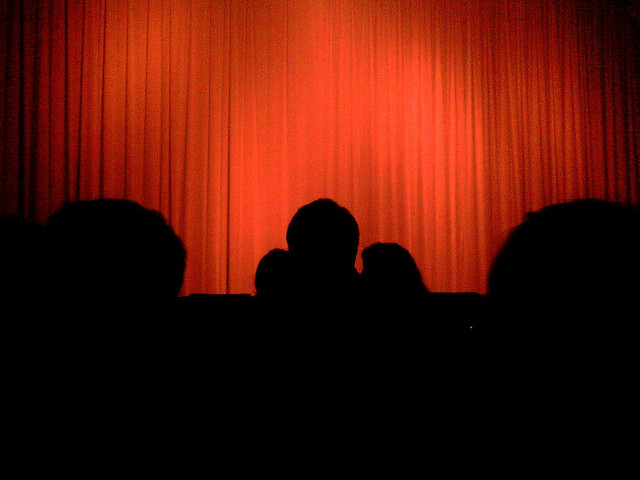A productive office is supposed to be a buzzing hive of activity, right?
But as a manager, a workplace that’s always humming with constant activity is not what you want to see — because it’s a sign that something has gone awry. It means that people are putting on a show to look busy all the time.
You know the trick: when someone walks by, you quickly switch tabs to bring up the spreadsheet or report you’re supposed to be working on, or engage in theatrics like looking very annoyed or walking briskly like you’re a very important person who can’t be bothered.
Welcome to Productivity Theater. Even though it’s impossible for human beings to be working nonstop, that’s what’s expected at the workplace. Looking busy becomes how you get recognized for doing a good job. The result is a show put on for the managers — and proceeds largely according to their expectations, scripts, and direction.
The Fruitless Posing of Productivity Theater
One of the biggest challenges of being the boss is that you always want to know what’s going on. Your job relies on information in order to be able to deal with problems, strategize, and make decisions, and it’s why leaders like Andy Grove spent the larger part of his day information-gathering.
Yet, as Harvard Business School professor Ethan Bernstein discovered, this information-gathering quest can be exactly what drives people to put on a productivity theater show.
When Bernstein studied a Chinese mobile phone factory, he was surprised to find that employees devised better, easier, safer ways to perform tasks, but when managers came around, they returned to doing things by the book. Even though the company was trying to build an open company culture of learning and continuous improvement, it left out the crucial factors of trust and autonomy. Employees ran into obstacles and discouragement when bringing things up, since the only “acceptable” changes came from the top.
The intended openness turned into an obstacle because it didn’t serve employees and slowed them down. “We assume that when we can see something, we understand it better,” Bernstein explained to the Harvard Business Review. “In this particular environment, and perhaps many others, what managers were seeing wasn’t real. It was a show being put on for an audience. When the audience was gone, the real show went on, and that show was more productive.”
Overcome Managerial Confirmation Bias
The problem is that people already see what they want to see. If everyone seems busy all the time, it tends to reflect well on you as a productive manager for running a tight ship.
But as one of the plant operators in Bernstein’s study explains, this is just a coping mechanism to keep things running smoothly — rather than making improvements, innovating, and trying new things. “Everyone is happy: Management sees what they want to see, and we meet our production quantity and quality targets.”
When asked about what motivated them to hide their improved techniques and experiments, the plant workers pointed to the lack of knowledge that many middle managers have of what jobs actually entail:
People from above don’t really know what they are doing. They set all these rules, but they have no idea how it actually operates down here. Sure, process engineers time these things and set all of these requirements, but they have no idea how people operate.
Catering to the confirmation bias of managers is counterproductive. Inherent to the job of managing others is that you’re going to be somewhat removed from the work being done. Your productivity relies on helping your team make progress, not driving that knowledge further underground.
The appearance of continuous activity means that there’s either a show going on due to a lack of support and trust or people are struggling to manage their time effectively — both exactly the kind of issues that make up a manager’s job.
Don’t Short-Circuit Transparency
The point of transparency isn’t one-way observation but openness, increasing ownership and empowering the very people doing the work. Here’s three things to consider to protect against productivity theater:
- Define productivity in terms of results rather than facetime.
Stop measuring things in terms of hours and mere presence, and look instead at results. Relying on face time as a way to measure performance incentivizes presenteeism over efficient, effective work. - Create zones of privacy.
In his study, Bernstein found that creating smaller zones of privacy — blocking off certain assembly lines with curtains, for example — actually allowed transparency to do it work. Since the workers felt safe to experiment and not put on a show, they became more productive and were more comfortable sharing their improvements. In open offices and transparent work cultures, make sure there are physical and mental spaces where managers aren’t hovering. - Find out what people need to manage their energy.Willpower, productivity, and motivation wax and wane during the day, so doing your best work means having the autonomy to recharge when you need to, without having to put on a show of looking busy.Incentivize people to take breaks, get away from the desk, and exercise.
That could mean furnishing coffee and healthy snacks, having team lunches away from people’s desks, or offering a stipend for a gym membership. You could even provide dedicated napping spaces like Hubspot, which has an entire nap room that can be booked like a conference room, or Buffer, which has bunk-beds in their SF headquarters.
* * * * *
If you don’t trust your employees, then you can’t trust what you see.
And the more you try to gain visibility in a trust-less environment, the more your employees will resent efforts to monitor and observe, especially when cloaked in the friendly language of openness and transparency. They’ll hold themselves back and end up distrusting you in return.
Photo: Jason Brush



